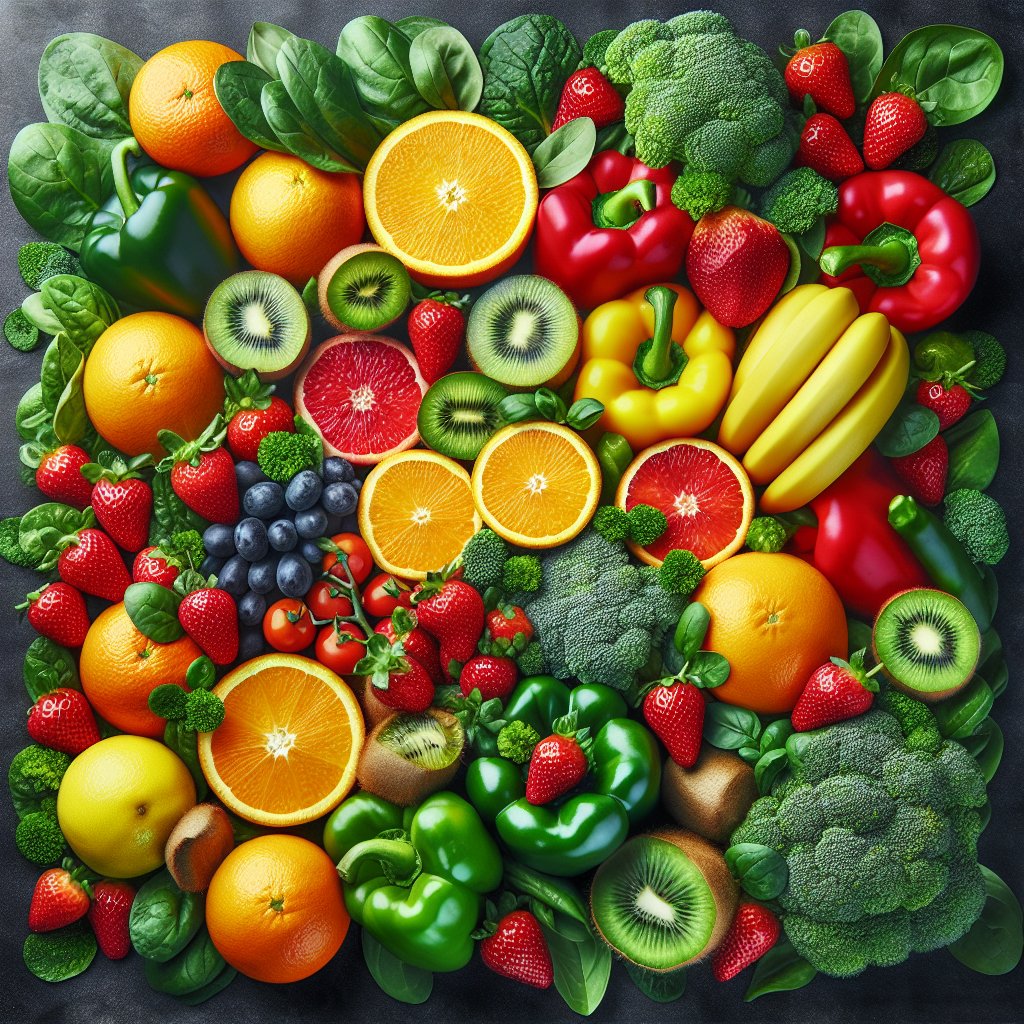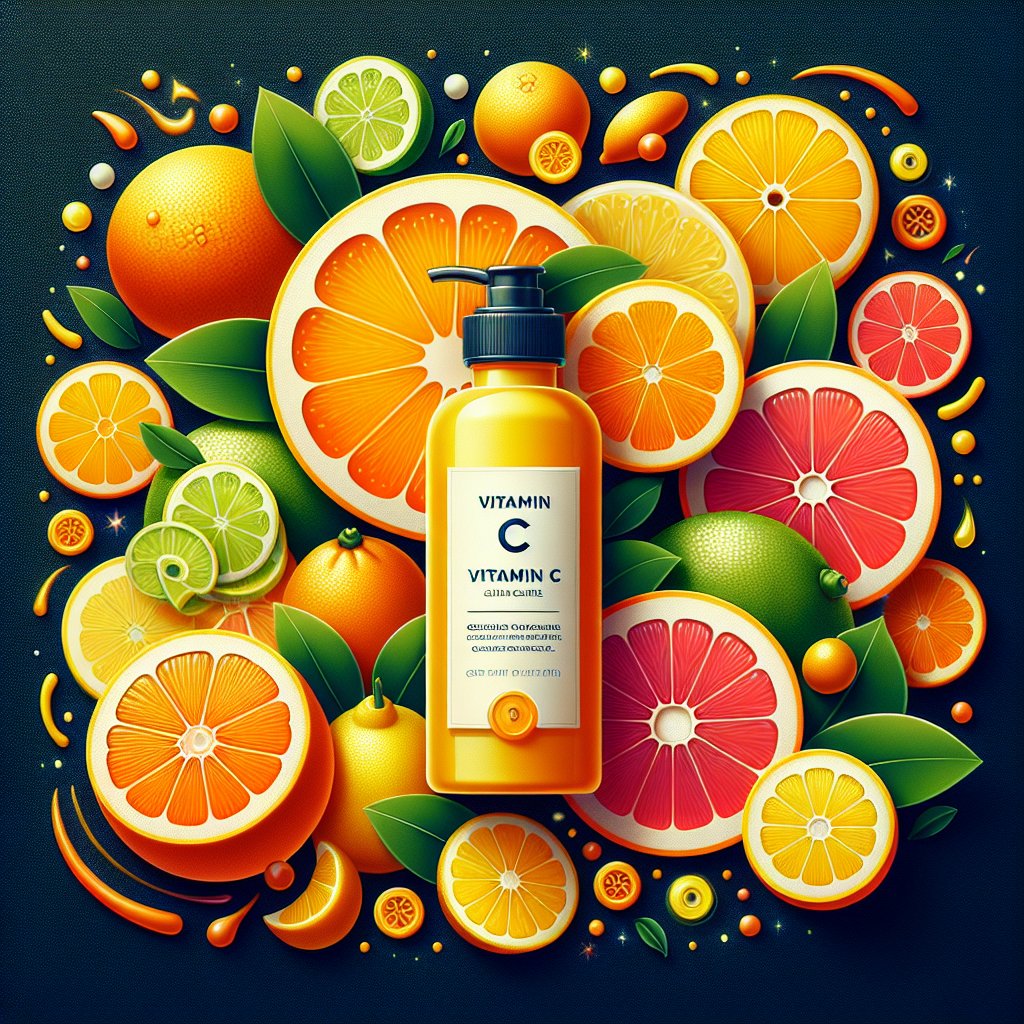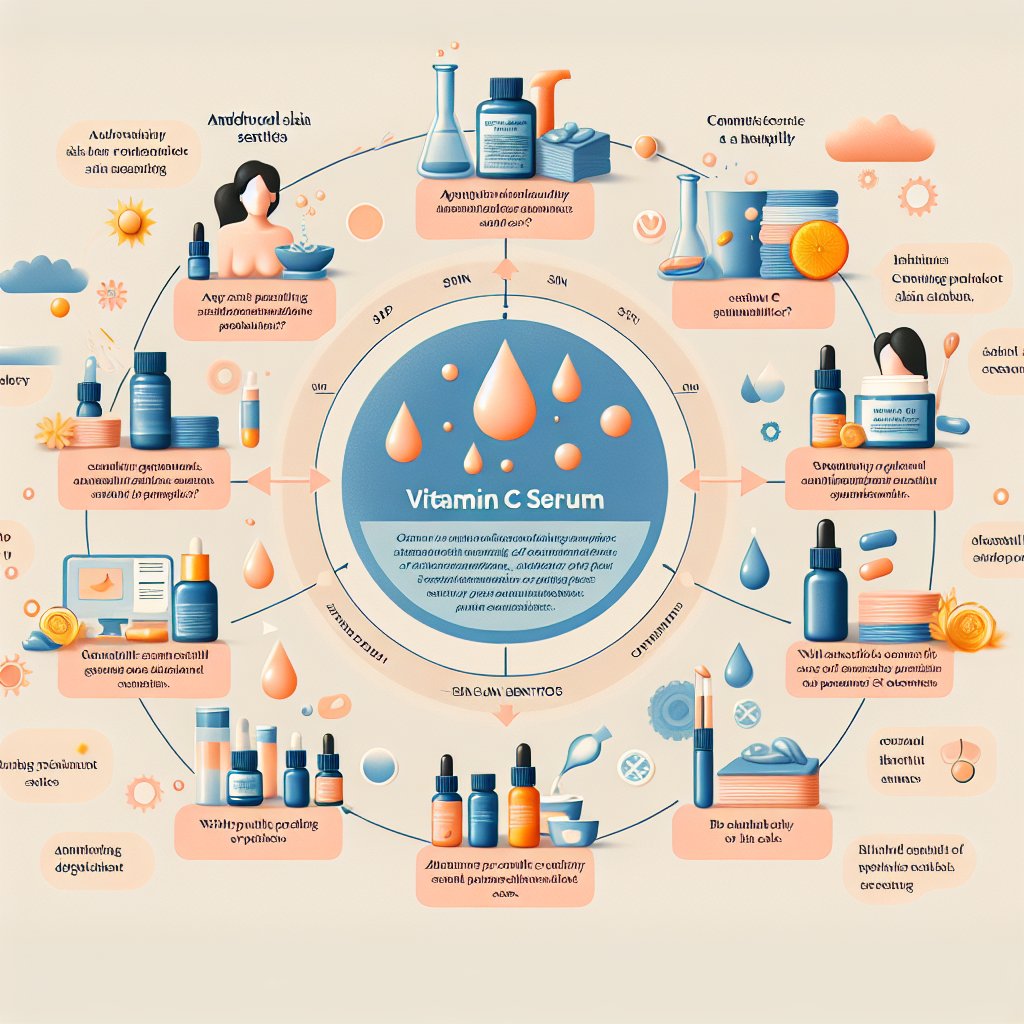Unveiling the Truth: Does Meat Have Vitamin C? The Ultimate Guide to Sources and Absorption!
Does Meat Have Vitamin C? Unveiling the Truth: The Ultimate Guide to Sources and Absorption!
Welcome to our ultimate guide to one of the most essential nutrients for the human body: vitamin C! We’re here to unravel the truth about the sources and absorption of vitamin C, shedding light on the age-old question: “Does meat have vitamin C?”
The Importance of Vitamin C in the Human Diet
Vitamin C, also known as ascorbic acid, is a vital nutrient that plays a crucial role in maintaining overall health and well-being. This water-soluble vitamin is a potent antioxidant that helps protect cells from damage, aids in the synthesis of collagen, and supports the immune system. Research has also shown that vitamin C is essential for the absorption of iron from plant-based sources. Additionally, it promotes healthy skin, supports cardiovascular health, and contributes to the body’s natural defense mechanisms.
While many people associate vitamin C with citrus fruits, it’s important to recognize that there are various sources of this essential nutrient, including fruits, vegetables, and yes, even certain types of meat.
Various Sources of Vitamin C
When it comes to obtaining vitamin C through diet, the options are diverse and abundant. Fruits such as oranges, strawberries, kiwi, and guava are well-known for their high vitamin C content. Similarly, vegetables like bell peppers, broccoli, kale, and tomatoes are excellent sources of this nutrient. What might surprise some is that certain types of meat, such as organ meats like liver, also contain vitamin C. While the levels may be lower compared to fruits and vegetables, the presence of vitamin C in meat challenges the conventional notion that it’s solely obtained from plant-based sources.
It’s worth noting that the vitamin C content in food can be influenced by factors such as storage, cooking methods, and processing. Understanding the diverse sources and the impact of various factors on vitamin C content is crucial for ensuring an adequate intake of this essential nutrient.
As we delve deeper into the world of vitamin C, we’ll explore the absorption of this important nutrient and uncover the truth about its presence in different types of meat.

Nutritional Overview of Meat
Meat is a powerhouse of essential nutrients, making it a valuable component of a ketogenic diet. Let’s dive into the nutritional composition of meat, focusing on its vitamins and minerals, including the curious case of whether meat contains vitamin C!
Vitamins in Meat
Meat is rich in various vitamins that are vital for overall well-being. It is a fantastic source of B vitamins, including B3 (niacin), B6, and B12. These B vitamins play crucial roles in metabolism, energy production, and brain function, making meat an excellent choice to meet your daily requirements.
Despite popular belief, meat does not contain vitamin C. Unlike plant-based foods like citrus fruits and bell peppers, meat doesn’t provide this essential vitamin. However, the abundant presence of other nutrients compensates for this absence, making meat an important part of a balanced ketogenic diet.
Minerals in Meat
When it comes to minerals, meat is a treasure trove. It’s particularly rich in iron, zinc, and selenium. Iron is essential for transporting oxygen in the blood, while zinc and selenium play key roles in immune function and cell protection. Including a variety of meats in your diet can help ensure you’re meeting your mineral needs on a ketogenic diet.
Additionally, meat provides a significant amount of potassium, which is important for maintaining healthy blood pressure and fluid balance. This mineral is especially crucial when transitioning into ketosis, as the body tends to excrete more sodium and fluids, making adequate potassium intake essential.
Overall, the nutritional profile of meat makes it a valuable addition to a ketogenic diet, supplying a range of essential vitamins and minerals that support overall health and well-being.
Vitamin C Basics
Let’s start with the basics – what exactly is vitamin C? Well, it’s a powerful antioxidant that supports various bodily functions. Scientifically known as ascorbic acid, vitamin C plays a crucial role in maintaining the health of our skin, bones, and connective tissues. Additionally, it aids in the absorption of iron and promotes the growth and repair of body tissues.
One of the most fascinating aspects of vitamin C is its role in supporting the immune system. Research has shown that it helps the body’s natural defense mechanisms fight off infections and reduces the duration of the common cold.
In terms of recommended intake, the National Institutes of Health suggests that adult women should aim for 75mg of vitamin C per day, while pregnant and breastfeeding women have slightly higher requirements at 85mg and 120mg, respectively. However, these recommendations may vary based on individual health conditions and lifestyle factors, so it’s always best to consult with a healthcare professional.
Sources of Vitamin C
Vitamin C, also known as ascorbic acid, is a crucial nutrient that plays a vital role in overall health and well-being. It is an essential vitamin that the body cannot produce on its own, so it must be obtained through a balanced diet or supplements. Here are some common sources of vitamin C:
Fruits
Fruits such as oranges, strawberries, kiwi, and guava are excellent natural sources of vitamin C. Including a variety of fruits in your daily diet can help ensure an adequate intake of this important vitamin.
Vegetables
Vegetables like bell peppers, broccoli, Brussels sprouts, and tomatoes are rich in vitamin C. Incorporating these colorful and nutrient-dense veggies into your meals can contribute to meeting your vitamin C needs.
Supplements
In addition to getting vitamin C from food, supplements can also be a convenient way to ensure you are meeting your daily requirements. Vitamin C supplements are widely available and can be particularly beneficial for individuals who have difficulty consuming an adequate amount through their diet alone.
By incorporating a variety of vitamin C-rich foods and, if needed, supplements, you can optimize your intake of this essential nutrient and support your overall well-being. Now, let’s explore the fascinating world of vitamin C and its potential presence in meat!
Absorption of Vitamin C
Vitamin C, also known as ascorbic acid, is a crucial nutrient that the body needs to maintain overall health. It plays a vital role in maintaining the health of skin, bones, and connective tissues. Understanding how the body absorbs vitamin C and the factors that can affect its absorption is essential for optimizing its benefits.
How the Body Absorbs Vitamin C
When you consume foods or supplements containing vitamin C, it’s absorbed in the small intestine through a process called active transport. This means that the body uses specific proteins to absorb vitamin C from the digestive tract and transfer it into the bloodstream. From there, it is circulated throughout the body to be utilized by various tissues and organs.
Factors Affecting Absorption
Several factors can influence the absorption of vitamin C in the body. These include:
- Dietary Intake: Consuming vitamin C-rich foods or supplements can enhance absorption.
- Amount Consumed: Higher doses of vitamin C may have lower absorption rates due to saturation of transport proteins.
- Food Preparation: Cooking and prolonged storage of food can lead to a loss of vitamin C content.
- Individual Variations: Factors such as age, genetics, and overall health can affect how efficiently vitamin C is absorbed.
It’s important to note that the presence of other nutrients and compounds in food can also impact vitamin C absorption. For example, consuming iron-rich foods along with vitamin C can enhance the body’s ability to absorb iron. Understanding these factors can help individuals make informed choices to maximize vitamin C absorption and overall health.
Myth: Meat as a Source of Vitamin C
Let’s debunk a common misconception around whether meat contains vitamin C. Many people believe that meat, especially red meat, is a good source of vitamin C. However, the truth is that meat actually does not contain any vitamin C at all. This may come as a surprise to some, considering how often this misconception is perpetuated.
It’s important to understand that vitamin C is primarily found in fruits and vegetables, with some examples being citrus fruits, strawberries, bell peppers, and broccoli. These plant-based foods are rich in vitamin C and are crucial for meeting your daily requirements.
Research studies have shown that the human body does not have the ability to produce vitamin C on its own, which makes it essential to obtain an adequate amount of this vitamin through our diet. This is where the misconception regarding meat arises; since meat does not contain vitamin C, relying solely on meat for your nutritional needs can lead to a deficiency in this vital vitamin.
Scientific Evidence
A study published in the European Journal of Clinical Nutrition compared the vitamin C levels in various foods. The findings revealed that while fruits and vegetables are abundant sources of vitamin C, meat and animal products contain very little to no vitamin C. This reaffirms the fact that meat should not be relied upon as a source of vitamin C in your diet.
Additionally, another research article in the Journal of Agricultural and Food Chemistry emphasized the importance of balanced nutrition and highlighted that a diverse diet including fruits and vegetables is essential for meeting the body’s vitamin C requirements.
Therefore, it’s crucial to dispel the myth that meat is a source of vitamin C. Instead, focusing on a well-rounded diet that incorporates plenty of vitamin C-rich fruits and vegetables is key for maintaining optimal health and nutrition.
Research on Vitamin C in Meat
Let’s start by diving into the scientific studies and research findings on the presence of vitamin C in meat. Many people believe that vitamin C is only found in fruits and vegetables, but there’s more to the story.
According to a study published in the Journal of Agricultural and Food Chemistry, it was discovered that raw meat does indeed contain vitamin C. The research revealed that beef, pork, and chicken contain varying levels of vitamin C, albeit in smaller amounts compared to fruits and vegetables. Although the levels may be lower than in plant-based foods, it’s essential to acknowledge that meat can still contribute to our overall vitamin C intake.
The presence of vitamin C in meat is attributed to the fact that animals, just like humans, can synthesize vitamin C internally. This means that the vitamin C content in meat can vary depending on the animal’s diet and overall health. For instance, grass-fed and pasture-raised animals are more likely to have higher levels of vitamin C in their meat compared to conventionally raised animals.
On the other hand, cooking can lead to a reduction in the vitamin C content of meat. The heat sensitivity of vitamin C means that cooking methods such as grilling, roasting, and boiling can cause some loss of this essential nutrient. Hence, it’s important to consider the cooking methods to preserve as much vitamin C as possible.
In conclusion, while meat may not be a primary source of vitamin C, it does indeed contain this vital nutrient. Incorporating a variety of vitamin C-rich foods, including both meat and plant-based sources, can contribute to meeting our daily vitamin C requirements.
The Impact of Cooking on Vitamin C Content
When it comes to cooking methods, it’s essential to consider their impact on the vitamin C content in meat. Vitamin C is a water-soluble nutrient that is sensitive to heat, light, and air. Its levels in meat can diminish when exposed to certain cooking techniques.
Heat and Vitamin C Degradation
Research has shown that the vitamin C content in meat is significantly affected by heat. High temperatures, such as those used in frying or grilling, can lead to the degradation of vitamin C. A study published in the Journal of Agricultural and Food Chemistry found that the vitamin C content in meat decreased by 35-40% when cooked using these methods.
Boiling and Steaming
On the other hand, boiling and steaming are cooking methods that have been found to have a lesser impact on the vitamin C content in meat. A study in the International Journal of Food Sciences and Nutrition discovered that these methods led to a lower reduction in vitamin C levels compared to frying or grilling. In fact, the vitamin C content remained relatively stable when meat was cooked using these gentler techniques.
Best Practices for Preserving Vitamin C
To preserve the vitamin C content in meat during cooking, it’s advisable to opt for methods that involve lower temperatures and shorter cooking durations. For instance, using a gentle cooking method like steaming can help retain more of the vitamin C present in the meat.
Furthermore, it’s essential to minimize the amount of time meat is exposed to heat and to avoid prolonged high-heat cooking methods. By being mindful of cooking techniques, it’s possible to maintain a higher proportion of the valuable vitamin C in meat dishes, maximizing its nutritional benefits.
Conclusion: Does Meat Have Vitamin C?
After diving into the fascinating world of nutrition, it’s clear that the question, “Does meat have vitamin C?” has sparked interest and curiosity among many followers of the ketogenic diet.
Key Points Summarized:
Throughout this comprehensive guide, we’ve explored the role of vitamin C in the human body and its crucial impact on overall health. We’ve scrutinized various sources of vitamin C, with a particular focus on meat, which is a staple for many individuals following a ketogenic lifestyle. While fruits and vegetables are commonly promoted as primary sources of vitamin C, the presence of this essential nutrient in meat has been a subject of interest and debate.
Scientific research has revealed that although meat may not be a substantial source of vitamin C compared to fruits and vegetables, it does contain small amounts of this vital nutrient. Specifically, organ meats such as liver and kidney contain higher levels of vitamin C compared to muscle meats. Additionally, while cooking methods can impact the vitamin C content in meat, consuming raw or minimally cooked meat may help retain more of this nutrient.
It’s crucial to understand that the absorption of vitamin C from meat might differ from that of plant-based sources due to the presence of other nutrients and compounds. Nevertheless, including a variety of vitamin C-rich foods in a well-rounded ketogenic diet is essential for maintaining optimal health and supporting the body’s immune system.
Conclusive Answer:
So, does meat have vitamin C? Yes, it does. While meat may not be the primary source of vitamin C, it does contain this essential nutrient in varying amounts. Incorporating a balanced intake of both meat and vitamin C-rich plant-based foods can ensure that individuals following a ketogenic diet meet their daily requirements for this vital nutrient. By embracing a diverse and nutrient-dense approach to food choices, one can enjoy the benefits of both meat and vitamin C while thriving on a ketogenic lifestyle.


